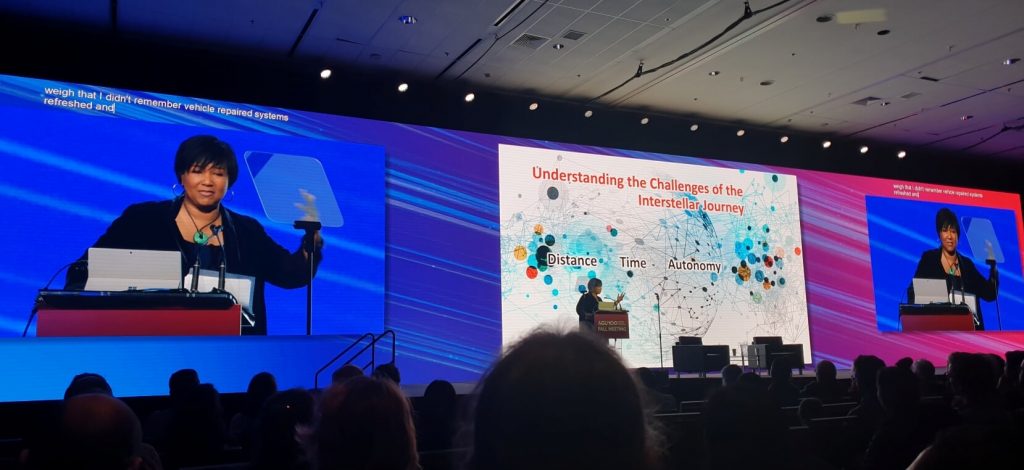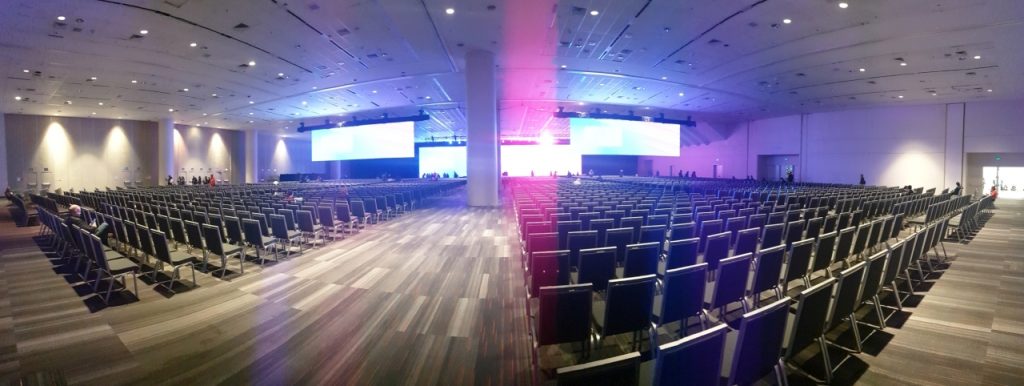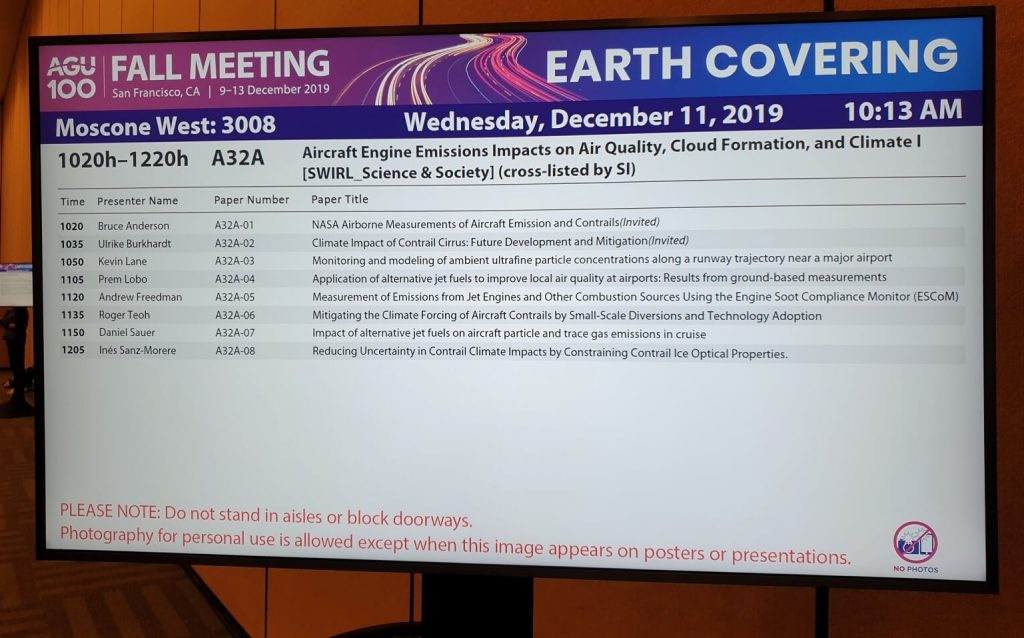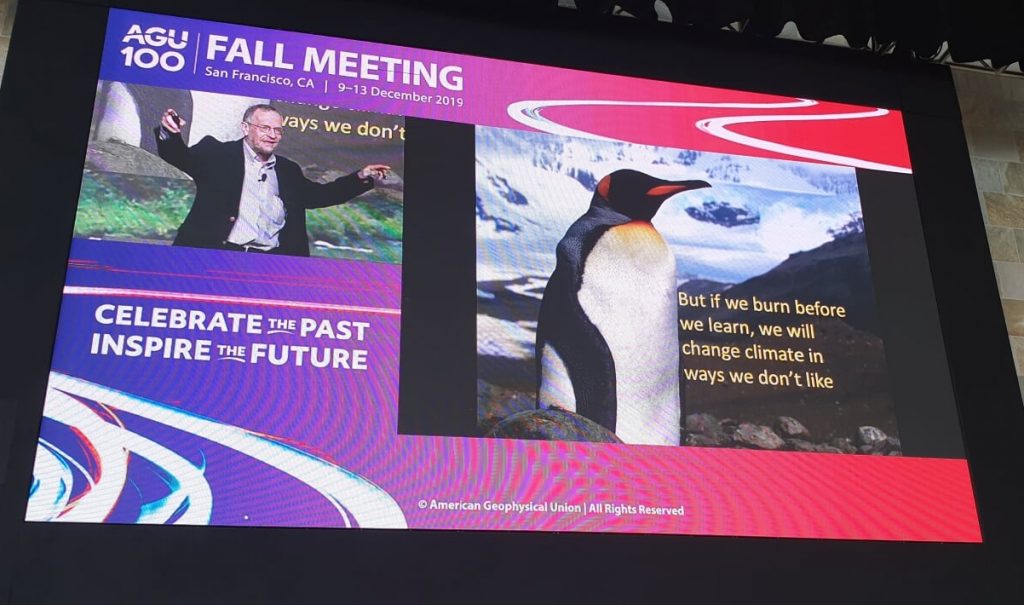Navigation menu
- Education
- Emissions & Air Quality
- Infrastructure & Services
- Meteorology & Climate
- News
- Physical Chemistry
- Projects
If you are going to San Francisco …

…make sure your poster tube fits in the overhead bin. On December 7, 2019, I was boarding a flight to San Francisco to attend the AGU Fall Meeting (American Geophysical Union). And judging by the frequent occurrence of poster tubes sticking up in the line of passengers waiting to board the plane, I was by far not the only one. My neighbor on the plane, a postdoc from the UK, an atmospheric scientist, was also going to the same place. Seeing so many scientists on just one plane made me realize the monstrous proportions of this event: around 25’000 participants from all around the world were expected to attend the 100th AGU fall meeting. AGU encompasses a wide range of subjects related to our planet and beyond. I was going there as a poster presenter and a co-chair of a session on aircraft emissions.

Back in April 2019, I was asked by a colleague from NASA Langley, Rich Moore, whom I briefly got to know a few years ago (at another conference), to co-chair a session on aircraft emissions at the AGU. I had heard about the AGU (especially about its proportions) but never attended before. Our first mission as session chairs (we were four, including Christiane Voigt from DLR and Rick Miake-Lye from Aerodyne research) was to invite people to submit contributions. We received about 30 contributions, from which we picked 8 oral presentations and the rest were assigned as poster presentations (including all session chairs). We submitted our program to the program committee by the end of August. At the beginning of October, I received a confirmation e-mail about the acceptance of my presentation and invitation to serve as a chair for the session. AGU was a go!
With an event of such size, you need a proper venue. The conference took place in the freshly rebuilt Moscone convention center. The center has three wings (South, North, and West) and the poster sessions were held in a massive underground hall between the South and North wings with several thousand posters being presented on a given day and overall, more than 7000 presentations were given during the conference.

The speakers in our session “Aircraft engine emissions impacts on air quality, cloud formation and climate” gave high-quality presentations on a wide variety of subjects related to environmental impacts of air travel: ground emission measurements, airborne measurements, alternative fuel effects on emissions, contrails modeling, ambient air monitoring and novel instrumentation. Overall, the session was well attended and the audience asked intriguing questions. It went by all too quickly: only 15 minutes per talk including questions. That is why I usually get more out of a poster session.

My poster dealt with a comparison of measured emissions of non-volatile particulate matter (the solid component of soot composed of light-absorbing carbon, also known as black carbon) from a wide range of aircraft engines with a method based on emissions certification data. Our results show that in-service engines can widely vary in terms of their emissions profile and often have higher particle emissions than the estimates based on their certified smoke number (a measure of exhaust smoke visibility), especially in terms of the particle number emissions (number of particles emitted per kg fuel burned). Getting the best possible answers is crucial for scientific assessments of environmental impacts. Investigating the effects of engine aging on emissions and emissions variability is the focus of our project AGEAIR.

Although big conferences like the AGU Meeting feel impersonal, they always attract big names and you never run out of things to do in smaller groups and you can always meet people that work on similar topics like you. I feel privileged to have had the opportunity to listen to and meet some of the leading scientists and policymakers who see the big picture. As the AGU put it, “as scientists and engineers, we must continue to engage with policymakers, communities, businesses, and the public to undertake solution-oriented research and analysis. Scientific institutions, including academia and governmental agencies, should expand and prioritize their support for research, application, and knowledge dissemination to address the climate crisis.”
